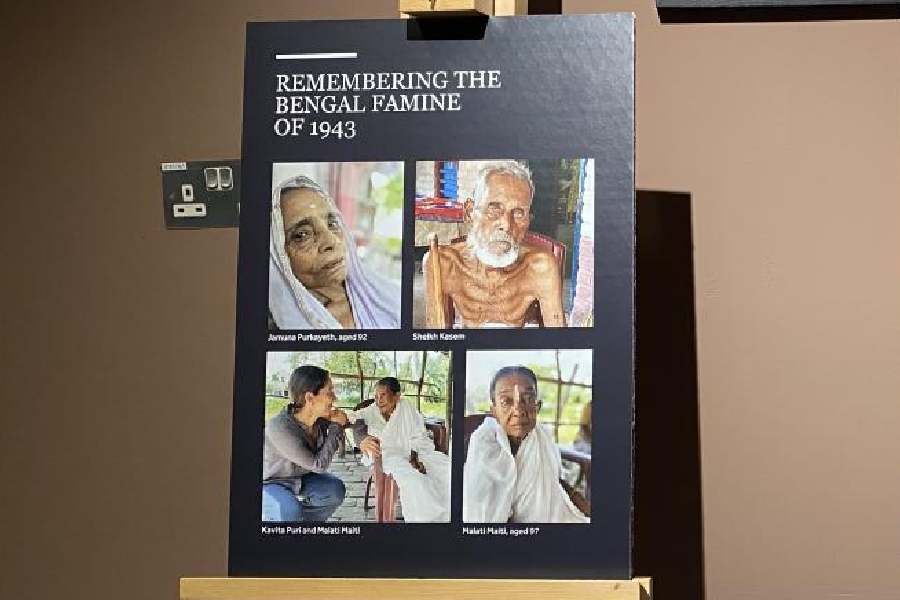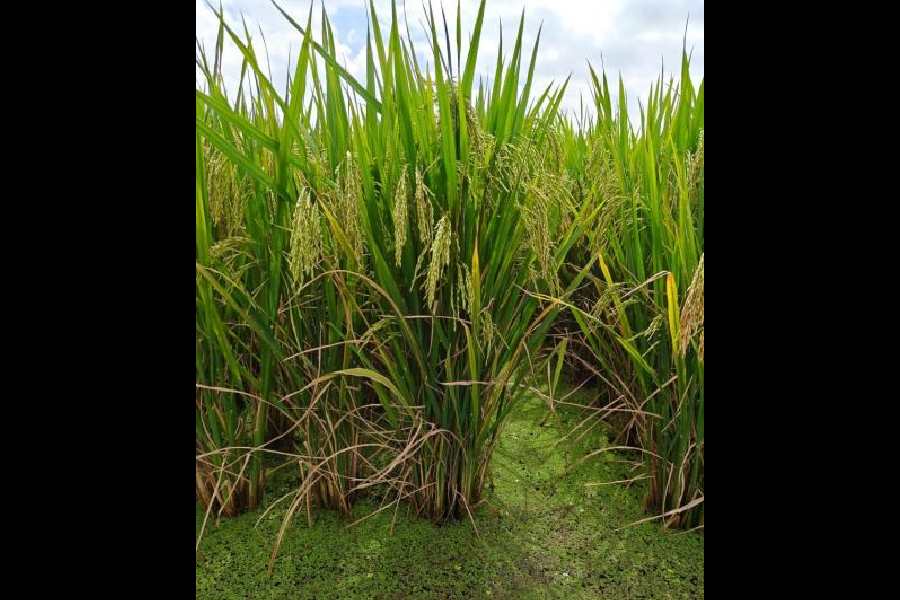 |
| BREAKING TRADITION: A Jhumia couple on their way to the plantation fields; (below) a traditional Jhumia village. Pics: Moumita Chakrabarti |
 |
R. Thansiama is thinking big — he is dreaming of a palm oil factory that is slated to come up in his district. A few years ago, he led a nomadic life, moving from one spot to another. Now he runs a flourishing palm cultivation business in Mizoram’s Thingdawl village in Kolasib district.
“I earn enough to look after my family. My son is also involved in my work,” he says proudly.
He started palm cultivation in 2002. Today, on two hectares of land, he grows some 1,000 palm trees. The business is profitable — a bunch of oil palm weighing between 15 and 30 kilos is sold for Rs 52.50-105. Once the palm oil factory comes up in Kolasib, Thansiama’s profits will go up.
Thansiama used to do jhum cultivation — a term for an agricultural practice followed in the Northeast. Communities move from one area to another, choose a piece of land, burn down the trees and other vegetation there, and then harvest their own crops. After the soil loses its fertility, they move to another area to practise what is also known as shift cultivation or slash and burn agriculture.
But many people like Thansiama are now being encouraged to give up the old practice and adopt new measures. Zahming Liana of Sihphir is among them. He remembers the time when he was a jhum cultivator. From January he would start felling trees on a piece of land allotted by the village community. He would let the stumps dry and then burn them to ashes by March. Then, on the soil believed to be enriched by the ashes, he would grow rice, maize, chillies, sesame, beans, ginger, tapioca and other vegetables. After a year, he would shift to another area and once again start from scratch.
The Jhumia families of Mizoram knew no other form of livelihood. But with the government stepping in, families are being weaned from the old practice. Liana, for instance, grows squash these days.
For centuries, jhum cultivation has been the traditional way of agriculture for farmers in the region. But environmentalists hold that it is a destructive way of cultivation, as every year acres of forest areas are cleared for farming, leading to ecologic imbalances. The cutting of trees, for instance, has led to a fall in the rainfall in the region.
To counter this, the Mizoram government launched the New Land Use Policy (NLUP) several years ago. The policy bore fruit, with many farmers opting out of jhum. Now it has decided to launch NLUP II, going beyond NLUP which was followed in 1985-1999.
The new policy seeks to look at various ways of promoting alternative forms of livelihood for Jhumias. Several departments — agriculture, horticulture, sericulture, fishery, soil and water cultivation, animal husbandry and veterinary, industries and forests and environment — are working together to help the families settle down.
Out of 2,06,365 families, 1,20,000 are to be covered by NLUP II and receive a grant of Rs 1,00,000 a family. They will also be given a plot of land, quality plants, seeds, pigs or fish, depending on the business that the family would like to adopt.
“We will be giving this monetary assistance to Jhumia families interested in new livelihoods. Training will also be provided,” says P.L. Thanga, vice-chairman of the NLUP implementing board.
While rice, sugarcane and oil palm are the major yields, Mizoram is also promoting a host of other crops. Squash farming, which was started in 1995-96, is now flourishing in the Sihphir area.
Like Liana, at least 600 other Jhumia families have started squash farming. “The area has enough production to export squash to Mumbai, Delhi, Calcutta, Silchar and even Bangladesh,” says Zosangliana Tochhanwng, president of the Mizoram squash growers association.
Betel nut cultivation is on the rise as well. The nuts are much loved and heavily consumed in the Northeast, so there is a ready market for it. About 200 families in Bilkhawthlir and Vairengte villages in Kolasib have opted for betel nut cultivation.
J. Samuel started growing betel nuts in 1997, and is now reaping the benefits. “My yearly income has gone up to Rs 2.6 lakh a year,” says Samuel, who has over 3,000 trees growing on two hectares of land. Samuel is now looking forward to the Rs 1,00,000 he is slated to get under NLUP II.
Rubber and coffee plantations are coming up as well. “About 512 families will be involved in rubber plantation, 821 families in coffee plantation and 3,508 families will cultivate grass, used for broomsticks,” says Jerome Rokima, director of the state’s soil and conservation department.
But not everybody is willing to let go off the old practice. Darthanthuama, a resident of Kawnpui village in Kolasib, says he will continue with jhum cultivation while trying his hand out at grass cultivation for brooms.
“I have 10 members in my family and I have been practising jhum cultivation for more than 50 years. I had never earned enough to take care of my family. This year I will get a grant from the NLUP but I will still do jhum or we’ll have nothing to eat this year,” he says. If the NLUP project works out for him, he says he will give up jhum next year.
Life has always been tough for the Jhumias. “Though we do a lot of work on one patch of land, we have to start from the beginning every year. It is tiring,” says Darthanthuama.
The people go on foot to hill tops, miles away from their home, stay in thlam (makeshift houses) on weekdays, and come back home on the weekend, says David L. Thangliana, deputy director, information and public relations, Mizoram government. “They attend church on Sunday and Monday morning they go back to their farmlands,” he says.
The government hopes that NLUP II won’t just lift people out of poverty but also restore the ecological balance in the state. The state plans to earmark 60 per cent of the total land for forests. Another 10 per cent will be reserved as community forest to safeguard water sources, while 10 per cent of the land will be used for firewood, timber and other such community needs. Of the remaining 20 per cent, 15 per cent will be used for cultivation under NLUP and 5 per cent for habitation and infrastructure.
The government plans to replace the makeshift houses of the people with concrete structures. It hopes that with at least a square meal a day, and a roof over their heads, the Jhumia families will start their lives anew.










